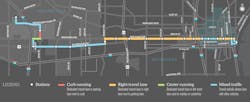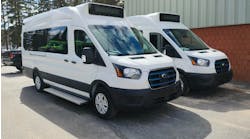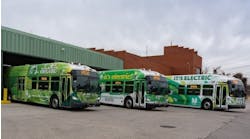After receiving input at more than 60 public meetings, outreach events and stakeholder gatherings, the final route features dedicated bus-only lanes along 53 percent of the route, with up to 19 stations for riders to access the BRT and connections to and from more than a dozen other MCTS routes.
This service is expected to save up to 16 minutes a day for riders taking the bus roundtrip, that’s a 20 percent time savings compared to current MCTS service. Thanks to BRT, riders traveling the full corridor could save more than 60 hours on their commute each year! With the increased speed and reliability, comes more transit users. More than 9,500 riders are projected to use the East-West BRT every week day by 2035, a 31 percent increase over current bus service. Similar systems have seen ridership increase more than 40 percent.
“Milwaukee is home to world-class education opportunities, cutting edge technology and research, numerous fortune 500 companies, a thriving arts and culture scene, second to none professional sports teams and the World’s Largest Music Festival — yet we are one of few metro areas with over 1 million residents in the U.S. without an enhanced transit system. This project will change that,” said Milwaukee County Executive Chris Abele. “The East-West BRT will get more people to work and school than ever before. This route will improve service for riders that rely on the bus while getting people out of the cars and onto transit. The BRT will cut congestion on the roads and spark economic development from end to end. Milwaukee is a world-class city that deserves a world-class transit system.”
Not only will the East-West BRT increase transit usage and cut down on congestion on the roads, it will also better serve current riders along the corridor by reducing the time they spend riding the bus while increasing their access to jobs, school, shopping and recreational activities.
The BRT capital cost is estimated at $50 million. The financial plan for the project anticipates the capital cost will be funded up to 80 percent through the federal Small Starts program and other funding, with 20 percent funded at the County level. Funding for the day to day operation of the East-West BRT will be part of the existing MCTS budget.
East-West BRT the Numbers
- Length — 9 Miles Long
- Stops — Up to 19 Stations
- Frequency — Every 10 minutes 6am to 6pm, 20 to 30 minutes early, late and weekends
- Time Savings — Up to 16-minutes roundtrip each day
- Ridership — 9,500 daily riders
- Along the route -
- 47,000 residents
- 120,000 jobs
- 9 colleges and universities
- 7 medical facilities




